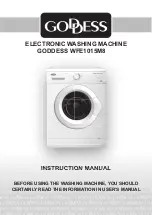Summary of Contents for Innov-i-s 80
Page 15: ...14 ...
Page 49: ...GETTING READY 48 ...
Page 119: ...UTILITY STITCHES 118 ...
Page 140: ......
Page 15: ...14 ...
Page 49: ...GETTING READY 48 ...
Page 119: ...UTILITY STITCHES 118 ...
Page 140: ......
















